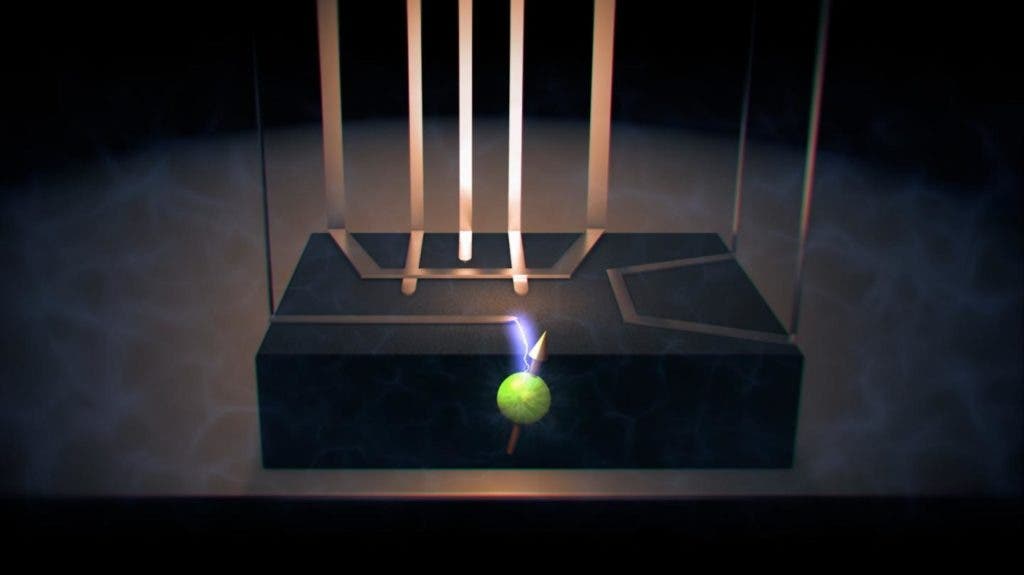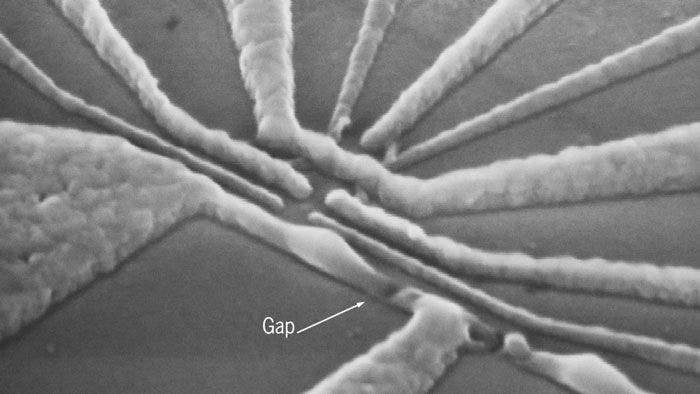
Researchers at the University of South Wales in Australia have controlled the nucleus of a single atom using only electric fields for the first time. This idea was first proposed in 1961, but the practicalities have eluded scientists since then. To make things especially interesting, the discovery of the method was made completely by accident.
“This discovery means that we now have a pathway to build quantum computers using single-atom spins without the need for any oscillating magnetic field for their operation,” said UNSW’s Scientia Professor of Quantum Engineering Andrea Morello. “Moreover, we can use these nuclei as exquisitely precise sensors of electric and magnetic fields, or to answer fundamental questions in quantum science.”
Nicolaas Bloembergen, the pioneer of magnetic resonance and Nobel Laureate, first suggested in 1961 that nuclear spin could theoretically be controlled with electric fields. How exactly we might go about that has escaped scientists ever since — until now.
“I have worked on spin resonance for 20 years of my life, but honestly, I had never heard of this idea of nuclear electric resonance,” Prof Morello says. “We ‘rediscovered’ this effect by complete accident – it would never have occurred to me to look for it. The whole field of nuclear electric resonance has been almost dormant for more than half a century, after the first attempts to demonstrate it proved too challenging.”
Magnetic resonance is one of the most practical and widespread techniques in modern physics and medicine. It’s what allows doctors to peer inside the tissue of patients in exquisite detail or what allows mining and oil companies to analyze mineral samples.
However, the efficacy of magnetic resonance is very poor for certain applications that work with objects at a very small scale, such as atoms.
To explain the difference between controlling nuclear spins with magnetic and electric fields, Morello uses an analogy of a billiard table.
“Performing magnetic resonance is like trying to move a particular ball on a billiard table by lifting and shaking the whole table,” he says. “We’ll move the intended ball, but we’ll also move all the others.”
“The breakthrough of electric resonance is like being handed an actual billiards stick to hit the ball exactly where you want it.”
Morello and colleagues originally planned to perform nuclear magnetic resonance on a single atom of antimony, an element with a large nuclear spin. This was a curiosity-driven project with no practical goal in mind — the physicists were simply interested in exploring the weird boundary between the quantum and classical worlds.
The experiment proved more than they bargain for, though. At one point, the researchers found that the nucleus refused to respond to certain frequencies, but showed a strong response at other frequencies. Imagine the surprise they had when they realized they were actually performing electric resonance instead of magnetic resonance!
“What happened is that we fabricated a device containing an antimony atom and a special antenna, optimized to create a high-frequency magnetic field to control the nucleus of the atom. Our experiment demands this magnetic field to be quite strong, so we applied a lot of power to the antenna, and we blew it up!” said Dr. Serwan Asaad, one of the lead authors of the study.

When working with small nuclei like phosphorus, a broken antenna usually ends the experiment. However, the researchers could still perform measurements because of the large size of the antimony nucleus. What’s more, in this case, the antenna still worked — it’s just that the damage caused it to create a strong electric field instead of a magnetic field.
Later, the researchers in Australia performed computer modeling that showed that nuclear electric resonance was truly a local phenomenon. The electric field distorted the atomic bonds around the nucleus, causing the nucleus to change orientation.
“This landmark result will open up a treasure trove of discoveries and applications,” says Prof Morello. “The system we created has enough complexity to study how the classical world we experience every day emerges from the quantum realm. Moreover, we can use its quantum complexity to build sensors of electromagnetic fields with vastly improved sensitivity. And all this, in a simple electronic device made in silicon, controlled with small voltages applied to a metal electrode!”
The findings appeared in the journal Nature.


